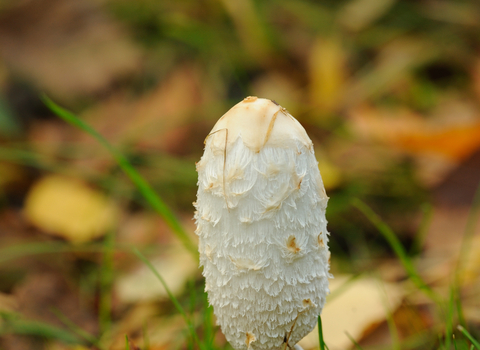Shaggy Inkcap ©Tom Hibbert

Shaggy Inkcap ©Amy Lewis
Shaggy inkcap
As its name suggests, the shaggy inkcap, or 'lawyer's wig', has a woolly, scaly surface to its bell-shaped toadstools. It is very common and can be seen at the road side, in parklands and even popping up in lawns.
Scientific name
Coprinus comatusWhen to see
May to NovemberSpecies information
Category
Statistics
Cap diameter: 5-15cmStem height: 10-30cm
Common.
